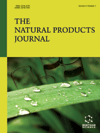
Full text loading...
Stimulation of the sensory nerves in the trigeminal ganglion triggers CGRP as well as nitric oxide release, leading to dilation of the cranial blood vessels and causing neurogenic inflammation. The release of these mediators is associated with several neuroinflammatory disorders. It is suggested that neuroinflammation can be alleviated by inhibiting the release of these inflammatory mediators.
The present study aimed to investigate the neuroprotective effect of α-Phellandrene in LPS-induced Zebrafish larvae.
Neurogenic inflammation refers to localized inflammation within the peripheral and central nervous systems, which can lead to various neuroinflammatory disorders, such as headache, migraine, Alzheimer’s disease, Parkinson’s disease, Huntington’s disease, and multiple sclerosis. This condition is triggered by neuronal activation, releasing neuropeptides, inflammatory mediators, cytokines, interleukins, and tumor necrosis factor-α. This study aimed to investigate the neuroprotective effects of α-Phellandrene by in-vivo experiment. The development of a drug to treat neurogenic inflammation is a prime task for managing the condition. Hence, this study was undertaken to find out a CGRP antagonist from a natural source to alleviate the neuro inflammatory disorders.
This study investigated the release of inflammatory mediators induced by lipopolysaccharides and the inhibitory effects of α-Phellandrene in zebrafish larvae. The inhibitory effect of α-Phellandrene on nitric acid production in larval fish homogenates was assessed using the Griess assay. Additionally, the mRNA expression of TNF-α was quantified using RT-PCR.
The result of the behavioral study showed that treatment with α-Phellandrene (10 μg/mL) significantly (p<0.05) reduced the behavioral abnormalities as compared to LPS-treated animals. In addition, α-Phellandrene-treated animals exhibited better nitric oxide inhibition activity as compared to the LPS-treated group. Further, the molecular analysis revealed that the α-Phellandrene treatment significantly (p<0.05) reduced the mRNA expression of TNF-α as compared to LPS-treated group.
The results of behavioral study, nitric oxide inhibition assay, and molecular analysis suggest that α-Phellandrene prevents neuroinflammation in LPS-treated animals. It was concluded from the study that α-Phellandrene is used to treat neuroinflammation, and it indicates that it possesses neuroprotective activity.

Article metrics loading...

Full text loading...
References


Data & Media loading...

